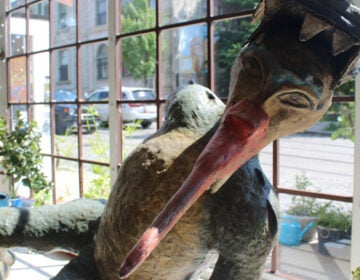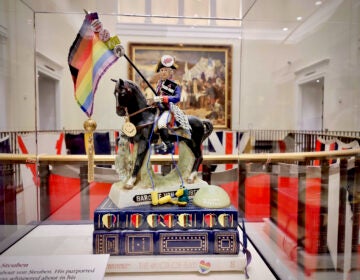The motherlode: Whistler’s iconic portrait is back in Philly after 142 years
The Philadelphia Museum of Art’s exhibition of the iconic portrait of American motherhood explains how it has European roots.
Listen 1:22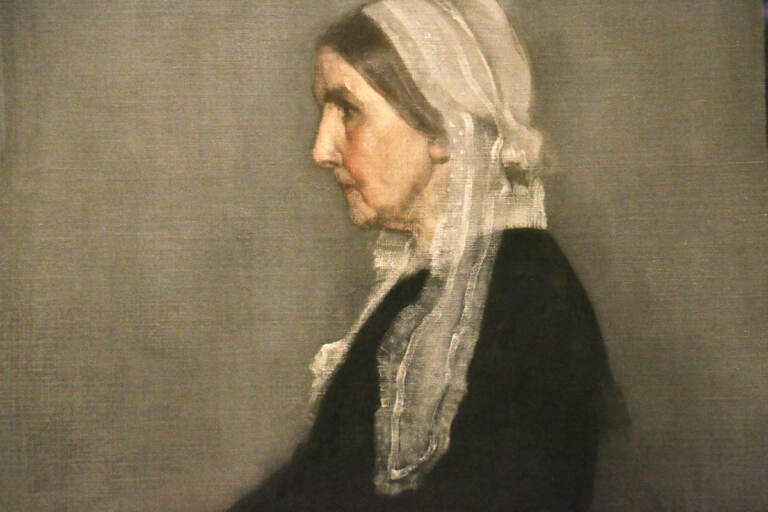
The well-known painting popularly known as ''Whistler's Mother,'' was last seen in Philadelphia in 142 years ago. It is the focus of a small exhibit at the Philadelphia Museum of Art, ''The Artist's Mother: Whistler and Philadelphia.'' (Emma Lee/WHYY)
The well-known painting popularly known as “Whistler’s Mother,” featuring an austere older woman sitting in profile, dressed in black with a white lace bonnet, has not been seen in Philadelphia in 142 years.
It is now visiting the Philadelphia Museum of Art in a small exhibition titled “The Artist’s Mother: Whistler and Philadelphia.”
The painting, considered an icon of American motherhood, was actually painted in London where the artist lived most of his life, and has been owned by the state of France since 1891. It has been bouncing among French museums for more than a century. It now lives at the Musée d’Orsay in Paris.
To artist James Abbott McNeill Whistler, the portrait of his mother was not supposed to be a sentimental ode to motherhood, which is apparent by the stark title he gave it: “Arrangement in Grey and Black Number One.”
Whistler was really interested in getting nuance out of a limited color palette, and his nearly monochrome painting is a masterclass in what you can get using just gray and black.
“He always got frustrated that people were more interested in his mother than in his artwork,” said Jennifer Thompson, the PMA’s curator of European painting and sculpture. “He always wants to direct us back to his artistry, so there may be a little bit of: ‘Pay more attention to me than to my mother. Look at what I have done with this work,’ in terms of the composition and this very restrained color.’”
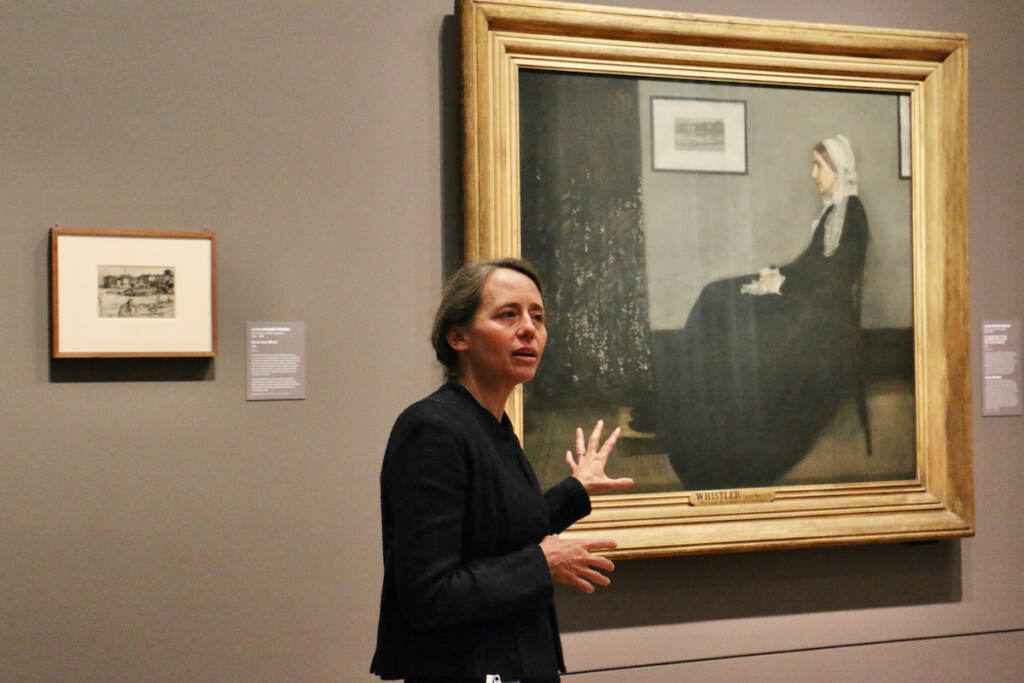
Although the painting is familiar through prints, cartoons, and advertising, seeing it in person offers viewers a new experience. For starters: it’s unexpectedly large, something Thompson was struck by when she uncrated it.
She said the canvas has subtleties that are not apparent in reproductions, which often sharpen edges that Whistler intended to be soft.
“It has a sense of being very crisp and sort of silent, but when you get up and look at it you’re taken by how Whistler has used the paint,” Thompson said. “He almost rubbed it into the surface.”
Much of the gray background is painted so thinly, the weave of the canvas comes through the surface.
Whistler was born in Lowell, Massachusetts in 1834, relocating to Paris in 1855 to study art. He identified with and found success in the European art world, eventually settling in London where his mother, Anna McNeill Whistler, went to live with him.
The portrait of Anna was painted in 1871 and later sent to Philadelphia for exhibition at the Pennsylvania Academy of the Fine Arts in 1881, then sold to the French government in 1891.
The portrait has occasionally come to the U.S., most notably in the 1930s when it went on tour causing an art world sensation. The U.S. Postage Service even issued a stamp with the image in 1934, the same year Cole Porter lauded it in his song “You’re The Top.
The Art Museum is able to temporarily display Whistler’s portrait through a swap arrangement with the Musée d’Orsay. Recently, the PMA loaned the d’Orsey a newly conserved “The Large Bathers” by Auguste Renoir, which has since been returned and is once again on view in Philadelphia. Now the PMA gets to show “Whistler’s Mother” in exchange.
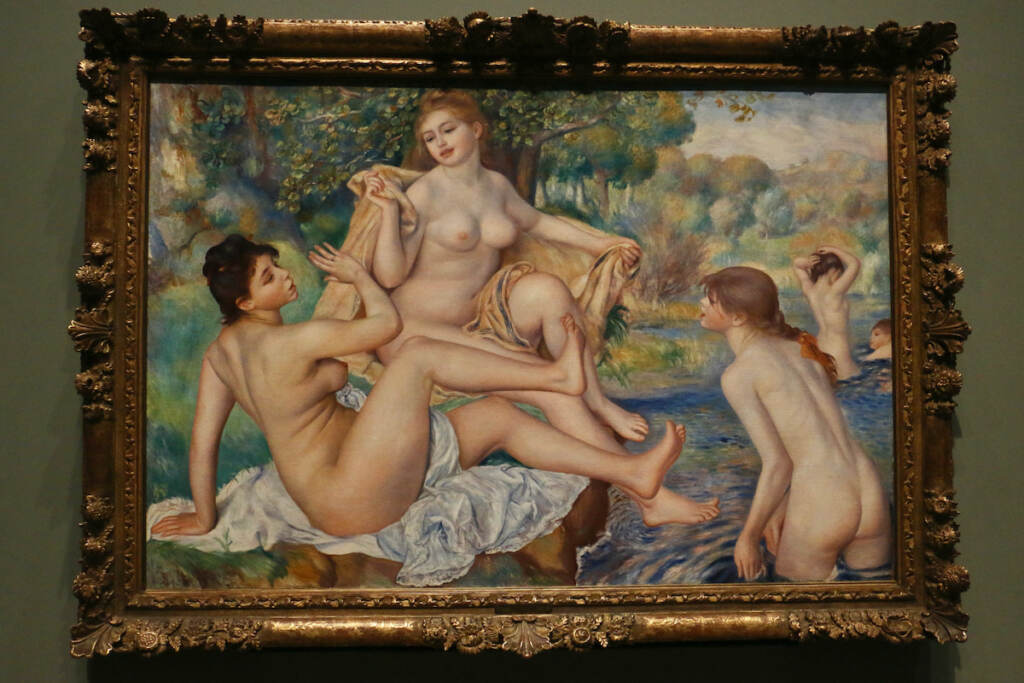
Thompson said the portrait likely depicts Anna Whistler accurately: she did, in fact, primarily wear black dresses after becoming widowed in 1849, and she was a devout Christian prone to scolding her artist son for his bohemian lifestyle.
But Thompson said Anna could also be much warmer and more vibrant than the portrait suggests, pointing to a biography about her published in 2018.
“She comes across in the biography as a very rich personality that we perhaps don’t see so much in the portrait,” she said. “We just see this very calm, very patient, somewhat austere woman. But in the biography she does come off as a very well-rounded and very warm personality.”
Thompson has curated a small exhibition, anchored by Whistler’s Mother, featuring other artists who created work featuring their own mothers, including contemporaries of Whistler like Cecilia Beaux and Henry Ossawa Tanner, and more recent artists like Dox Thrash, Alice Neel, and Sidney Goodman.

“The Artist’s Mother” is on view until October 29.
WHYY is your source for fact-based, in-depth journalism and information. As a nonprofit organization, we rely on financial support from readers like you. Please give today.




